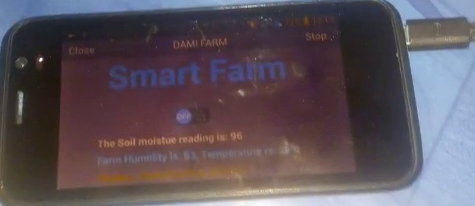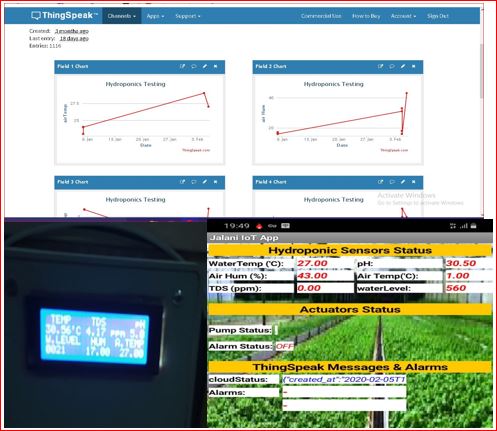
Introduction
Imagine being able to give plants exactly what they need, no more and no less. That’s the promise of soil nutrient monitoring with IoT (Internet of Things) devices. Gone are the days of guesswork and over-fertilization. Instead, we now have the power to monitor soil health in real time and make informed decisions that not only improve crop yields but also benefit the environment. Ready to dig deeper? Let’s explore how IoT is revolutionizing agriculture.
What is Soil Nutrient Monitoring?
Soil nutrient monitoring is the process of analyzing soil to determine its nutrient content. This information helps farmers understand what their crops need to thrive. Key nutrients like nitrogen, phosphorus, and potassium are essential for healthy plant growth. However, monitoring these levels manually can be tedious and prone to errors.
Why is Soil Health Important?
Think of soil as the foundation of agriculture. Healthy soil ensures robust crops, reduces the need for chemical fertilizers, and supports sustainable farming practices. Poor soil health, on the other hand, leads to lower yields, increased costs, and environmental degradation. Without proper soil health, farming becomes a gamble rather than a science.
Traditional Methods vs. Modern Technology
Traditional soil testing often involves taking samples to a lab, which is time-consuming and provides only a snapshot of soil conditions. IoT devices, on the other hand, offer continuous and real-time data, enabling proactive decisions. This transition from reactive to proactive farming is what sets modern agriculture apart.
Enter IoT: The Game-Changer in Agriculture

IoT devices are smart gadgets equipped with sensors that can collect and transmit data. In agriculture, these devices can measure various soil parameters like moisture levels, pH, temperature, and nutrient content. This data is then sent to cloud platforms, where it can be analyzed and used to make informed decisions.
How Do IoT Devices Work in Soil Monitoring?
- Sensors in the Field: IoT devices are placed in the soil to measure nutrient levels and other parameters.
- Data Collection: These sensors collect real-time data and send it to a central system via wireless networks.
- Analysis: Advanced algorithms analyze the data to provide actionable insights.
- Actionable Alerts: Farmers receive notifications on their smartphones or computers, guiding them on when and how to fertilize.
Data Integration with Other Systems
The beauty of IoT lies in its ability to integrate with other agricultural systems. For instance, soil monitoring data can be combined with weather forecasts and crop growth models to create a comprehensive farming strategy. This holistic approach ensures better results and resource optimization.
Benefits of Using IoT for Soil Nutrient Monitoring

1. Precision Fertilization
IoT devices allow for precise application of fertilizers, ensuring that crops get exactly what they need. This reduces wastage and enhances crop productivity. For example, if a specific area of a field is nitrogen-deficient, IoT devices can guide targeted fertilization instead of blanket application.
2. Cost Savings
By using fertilizers more efficiently, farmers can significantly reduce their expenses. The reduction in over-application means lower costs for both fertilizers and labor. Over time, these savings can add up to substantial financial benefits.
3. Environmental Protection
Over-fertilization leads to nutrient runoff, which can pollute water bodies. IoT helps prevent this by ensuring optimal fertilizer use. Additionally, it contributes to reducing greenhouse gas emissions associated with excessive fertilizer production and application.
4. Improved Crop Yields
With accurate nutrient data, farmers can make better decisions, leading to healthier crops and higher yields. Studies show that precision agriculture methods, powered by IoT, can increase yields by up to 25% in some cases.
5. Real-Time Monitoring
Farmers can monitor soil health 24/7 without stepping into the field, thanks to IoT devices. This saves time and allows for quicker responses to changing conditions.
6. Enhanced Decision-Making
Data from IoT devices provides farmers with insights that were previously inaccessible. Whether it’s choosing the right time to fertilize or identifying areas of soil degradation, informed decisions lead to better outcomes.
Key IoT Technologies for Soil Monitoring

1. Soil Sensors
These devices measure parameters like pH, moisture, and nutrient levels. Examples include NPK sensors and EC (Electrical Conductivity) sensors. These sensors are durable and designed to function in various climatic conditions, ensuring reliable data.
2. Wireless Communication Networks
Technologies like LoRaWAN, Zigbee, and cellular networks enable data transmission from sensors to cloud platforms. These networks ensure that even remote farms can benefit from IoT technology.
3. Cloud Computing
Cloud platforms store and analyze data, providing actionable insights to farmers. With advancements in cloud technology, data processing is faster and more efficient than ever.
4. Mobile Apps
User-friendly apps allow farmers to access data and receive alerts in real time. These apps are designed to be intuitive, ensuring that even those with limited technical knowledge can use them effectively.
5. AI-Powered Analytics
Some advanced IoT systems integrate AI to analyze patterns and predict future soil conditions. This predictive capability enables farmers to plan ahead, further optimizing their resources.
Applications of IoT in Precision Agriculture

1. Variable Rate Fertilization (VRF)
IoT devices help in applying fertilizers at variable rates based on soil needs, ensuring uniform nutrient distribution. This method not only saves resources but also minimizes environmental impact.
2. Integrated Pest Management (IPM)
By monitoring soil health, farmers can predict pest outbreaks and take preventive measures. For instance, nutrient imbalances can attract specific pests, and addressing these imbalances can reduce infestations.
3. Irrigation Management
IoT sensors can also measure soil moisture, enabling efficient water use alongside nutrient management. Combining these insights ensures that plants receive both adequate hydration and nutrition.
4. Crop Health Monitoring
IoT systems can detect early signs of nutrient deficiencies, diseases, or stress in crops, allowing farmers to address issues before they escalate.
Challenges in Adopting IoT for Soil Monitoring

1. High Initial Costs
IoT devices and infrastructure can be expensive for small-scale farmers. However, government subsidies and community farming models are helping to mitigate this issue.
2. Connectivity Issues
Remote areas may lack the network infrastructure needed for seamless data transmission. Innovations like satellite-based IoT networks are emerging to bridge this gap.
3. Data Privacy Concerns
Farmers may worry about the security of their data stored on cloud platforms. Companies are now prioritizing data encryption and secure storage solutions to address these concerns.
4. Technical Expertise
Using and maintaining IoT devices requires a certain level of technical knowledge. Training programs and user-friendly designs are essential to overcoming this barrier.
5. Integration Challenges
Integrating IoT systems with existing agricultural practices can be complex. A phased approach to adoption can make this transition smoother.
Future Trends in IoT-Based Soil Monitoring
1. AI Integration
Combining IoT with artificial intelligence (AI) will enable predictive analytics and smarter decision-making. AI can analyze large datasets to uncover trends that would be impossible to identify manually.
2. Drone Integration
Drones equipped with sensors can complement IoT devices by providing aerial soil and crop data. This combination allows for a more comprehensive understanding of farm conditions.
3. Affordable Solutions
As technology advances, IoT devices are becoming more affordable, making them accessible to smaller farmers. Open-source solutions and community initiatives are also contributing to this trend.
4. Blockchain for Data Security
Blockchain technology can enhance data security and transparency, addressing farmers’ privacy concerns. This innovation ensures that data remains tamper-proof and trustworthy.
5. Energy-Efficient Devices
Future IoT devices are expected to be more energy-efficient, with some powered by renewable energy sources like solar panels. This development reduces operational costs and environmental impact.
Steps to Implement IoT in Your Farm
1. Assess Your Needs
Identify the specific soil parameters you want to monitor. Understanding your farm’s unique requirements is the first step towards effective IoT adoption.
2. Choose the Right Devices
Select IoT devices based on your budget and requirements. Consult experts if needed to ensure compatibility and effectiveness.
3. Set Up Infrastructure
Ensure you have the necessary network connectivity and cloud storage. Partnering with local service providers can simplify this process.
4. Train Your Team
Provide training to your team on how to use and maintain the devices. Hands-on workshops can be particularly effective.
5. Monitor and Adjust
Regularly monitor the data and tweak your farming practices as needed. Continuous improvement is key to maximizing the benefits of IoT technology.
Success Stories: IoT in Action
1. India’s Smart Farms
In India, farmers using IoT devices have reported a 30% increase in yields and a 20% reduction in fertilizer use. These results highlight the potential of IoT to transform traditional farming practices.
2. Precision Farming in the Netherlands
Dutch farms leverage IoT and AI to optimize soil health, making them global leaders in sustainable agriculture. Their success demonstrates how technology can drive innovation in farming.
3. IoT-Powered Vineyards in California
Vineyards in California use IoT to monitor soil nutrients, ensuring top-quality wine production. This example showcases the versatility of IoT across different types of agriculture.
4. African Smallholder Farmers
In Africa, affordable IoT solutions are empowering smallholder farmers to improve soil health and boost productivity. These initiatives are driving food security and economic growth.
READ ALSO:
- Smart Farming Practices for Enhancing Pollination Efficiency
- Face and Fingerprint Recognition Biometric Surveillance Project
- Bimodal Biometric-based Surveillance System
- Raspberry Pi Face Mask Detection & Temperature COVID-19 Project
Conclusion
Soil nutrient monitoring with IoT devices is not just a trend—it’s a revolution in agriculture. By combining technology with traditional farming practices, we can achieve higher yields, reduce costs, and protect the environment. Whether you’re a small-scale farmer or managing a large agricultural operation, IoT offers tools that can transform the way you work. So, why not take the first step towards smarter farming today?
FAQs
1. What are IoT devices in agriculture?
IoT devices in agriculture are smart gadgets equipped with sensors that monitor various parameters like soil health, weather conditions, and crop growth.
2. How do IoT sensors measure soil nutrients?
IoT sensors measure soil nutrients by analyzing electrical conductivity, ion concentration, or specific chemical reactions in the soil.
3. Can IoT help reduce fertilizer costs?
Yes, IoT enables precision fertilization, reducing wastage and lowering overall fertilizer costs.
4. Are IoT devices affordable for small farmers?
While initial costs can be high, affordable IoT solutions are becoming available, especially with government subsidies and technological advancements.
5. What challenges do farmers face in adopting IoT?
Challenges include high initial costs, connectivity issues in remote areas, data privacy concerns, and the need for technical expertise.


